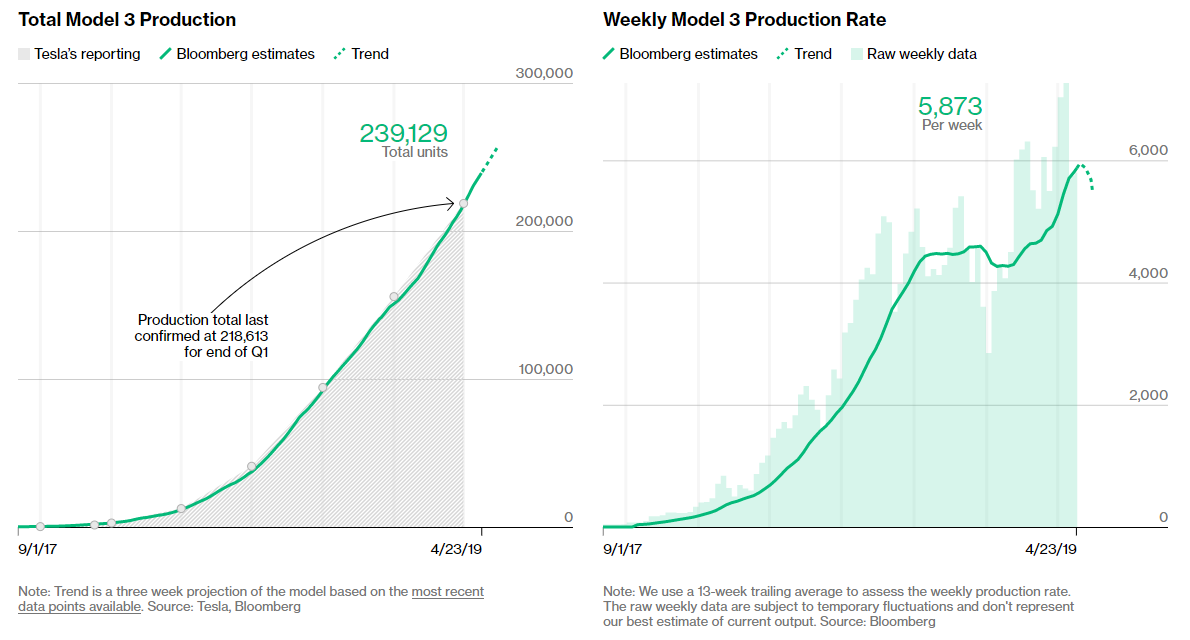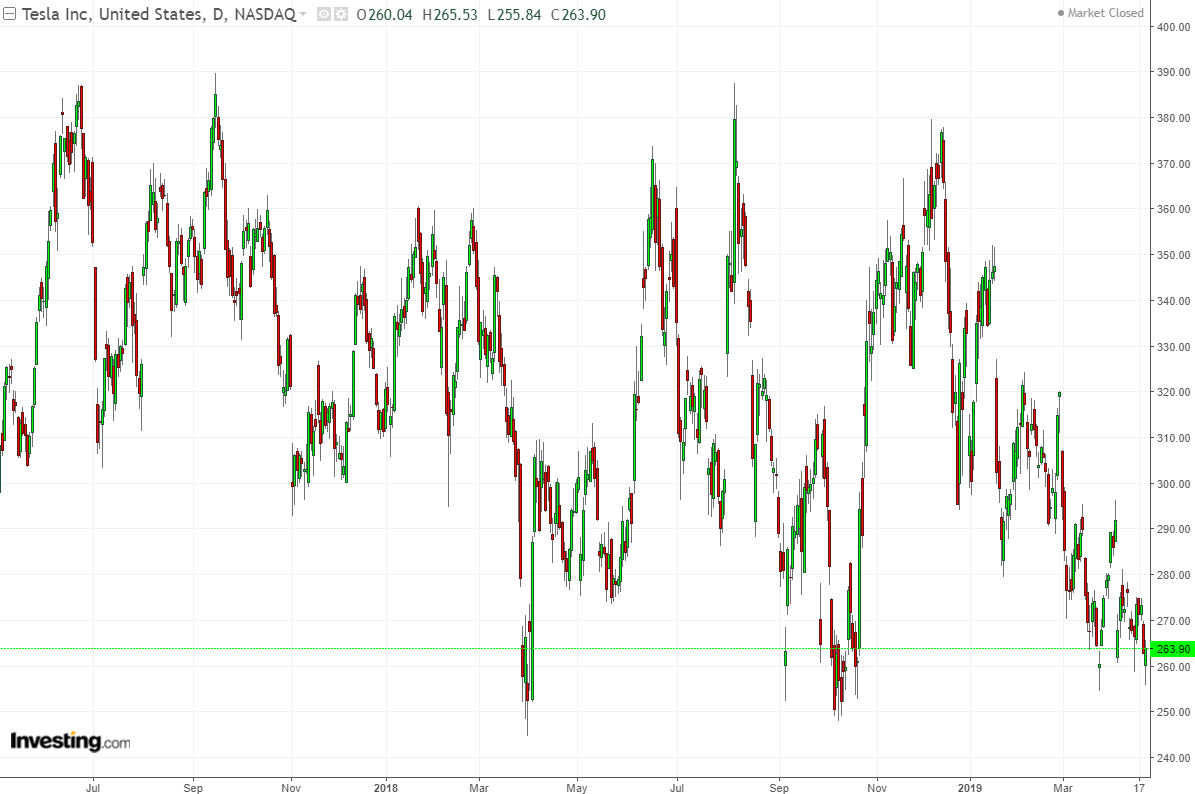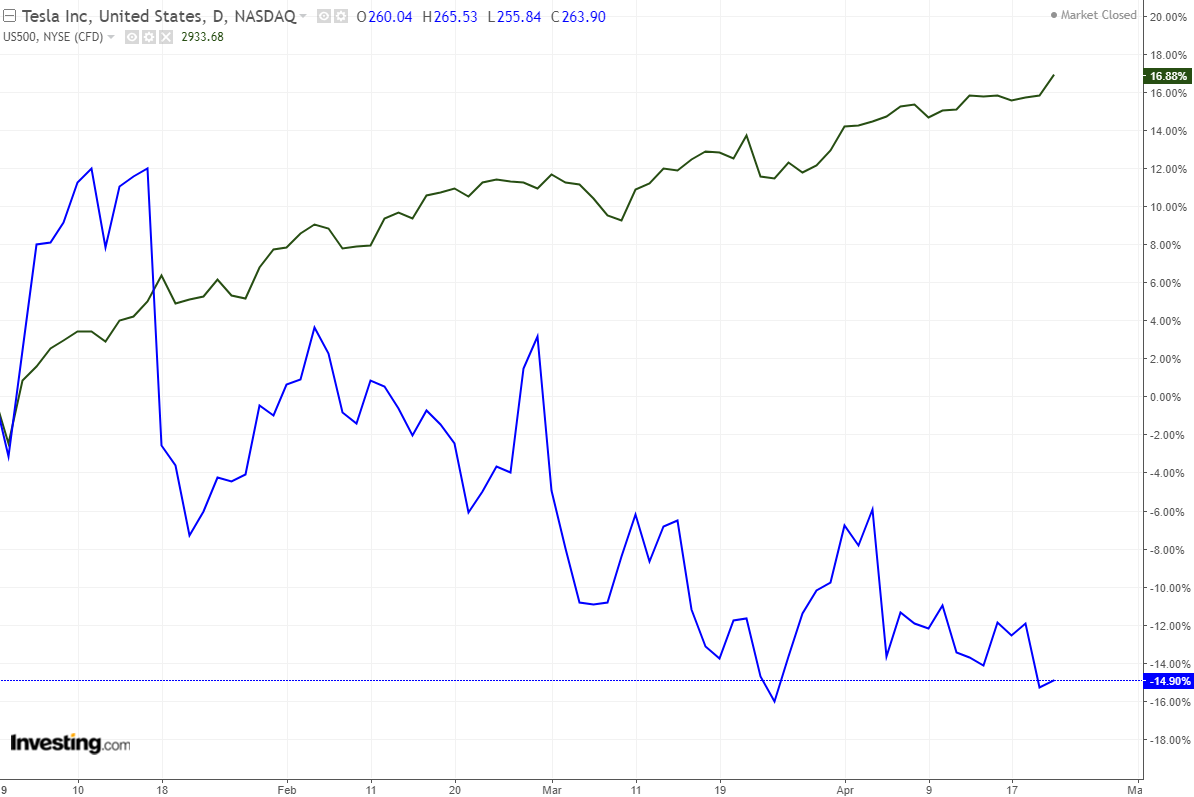Tesla—whether the company or the stock—has always been a polarizing force. Loyal believers in the company's ecologically sustainable, electric car manufacturing mission, as espoused by Tesla's founder and CEO Elon Musk, have, for years been battling with non-believers who view the company as unsound and its CEO as a false prophet selling an unrealistic promise.
Markets, however, have tended to buy the dream. That is, until recently, as Tesla's struggle to deliver has escalated and Elon Musk's behavior becomes increasingly perplexing.
Tesla (NASDAQ:TSLA) is set to report Q1 earnings on Wednesday, April 24, after the closing bell. Consensus estimates for revenue are $5.77 billion, with a loss of $0.87 per share. However, Tesla's earnings are often unreliable. Musk and company like to engage in creative accounting to reach certain goals in specific quarters, often when Musk promises that Tesla will have a profitable quarter upcoming. For a truer view of the company's actual situation, production and delivery numbers are much more telling than its income statement.
Core Mission Still To Be Achieved
A utopian future powered by sustainable energy and electric cars has always been a key component of Tesla’s core pitch. And it's the power of Musk's skill as a visionary to be able to convince investors this beautiful if unlikely dream could become reality under his tutelage. Thirteen years ago, in August of 2006, on the company's blog, Musk unveiled his master plan:
“Build a sports car. Use that money to build an affordable car. Use that money to build an even more affordable car”
The hard facts? It took Tesla 10 years to even begin to shape Musk's plan. The company ended up producing a few cars that sold for $80-120K before introducing the Model 3 at $35,000 in March of 2016.
In order to secure a spot on the waiting list for the Model 3, it was reported that 500,000 people were willing to put down a deposit of $1,000 each, raising $500 million for Tesla.

Chart courtesy Bloomberg
The only problem? Tesla remains unable to meet its production goals—the company has delivered only 218,000 cars to date.
In 2017, Musk said the company had run into ‘production hell,’ and that continues to be the case. Deliveries are lagging both Wall Street’s and Tesla’s own estimates. In the first quarter of 2019, the auto manufacturer delivered 63,000 vehicles, 27,000 fewer than in the final quarter of 2018. Tesla blamed this miss on challenges related to delivering cars to Europe and China.
It's not that Tesla doesn't understand it's in a bind. It's bloated and unwieldy and in debt. It has $33.7 billion in contractual obligations on its balance sheet, including $2.5 billion in debt that must be repaid in 2019, with another $2.5 billion coming due in 2020. Over the past few months, the company has laid off staff, contemplated closing stores, lowered prices only to raise them again after just three weeks.
As well, on January 1st, Tesla lost its federal tax credit on EV vehicles because they sold over 200K automobiles according to the IRS. This effectively raises the price-per-car for customers without putting more money into the company’s own pockets.
Both from a financial and production perspective, Tesla has an array of challenges to overcome. Given that Tesla remains an unprofitable operation, it will very likely need to obtain outside capital in the next year or so.

Chart powered by TradingView
There's more immediate trouble brewing for the already beleaguered electric car manufacturer as well: since the beginning of 2019, shares of the Palo Alto-based carmaker have fallen 17.8%, compared to a 16.5% gain for the S&P 500 over the same time period.
Chart powered by TradingView
Of course, Tesla's stock, which closed yesterday at $263.90, off 31.8% from its 52 week high, has always been more volatile than most, but a 34% gap in just four months between its performance and that of the S&P is simply astonishing. To close this gap, Musk has once again hauled out his tested method for breathing life into Tesla shares: sell even bigger dreams.
Bigger Promises, More Noise
The latest lofty promise: a fleet of on-demand, self-driving Tesla taxis. Two weeks ago, Musk claimed that Tesla is ‘vastly ahead of everyone’ when it comes to autonomous vehicles. He even went as far as predicting full self driving for Tesla vehicles by ‘next year at the latest.’ This past Monday, Tesla hosted a presentation for analysts and investors showcasing its capabilities and launch plans for this 'robotaxi' network in 2020.
Would Tesla be worth $50 billion if it was the first and only manufacturer able to provide self-driving cars in the very near future? Absolutely.
Will it become that manufacturer? Unlikely. More than 60 companies, including Google's (NASDAQ:GOOGL) Waymo, French automobile consortium Renault (PA:RENA) and Japan's Nissan Motor Co (OTC:NSANY) are already working on self-driving capabilities. And though Waymo successfully put a blind man behind the wheel of one of its autonomous cars in Austin, Texas in 2016, Waymo’s fully self-driving cars aren’t close to being commercially available. Adding to our skepticism: back in 2015, the CEO already promised self-driving vehicles within two years.
By now, it should be clear that Musk’s statements must be considered with extreme caution—they're meant as a distraction, creating smoke and noise that will draw investor focus away from Tesla's disappointing performance on all levels. Believing in Musk has always been a critical component of being a long-term Tesla investor.
Monday's presentation wasn't scheduled two days ahead of Tesla's Q1 2019 earnings release by mistake. Musk knows that bluster and big promises have always boosted Tesla's valuation. However, the more promises he breaks, the closer he brings Tesla to its breaking point. Given how the markets have treated Tesla over the past four months, Musk should be treading very carefully.

